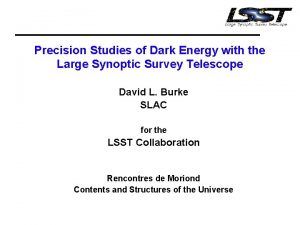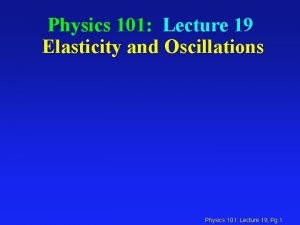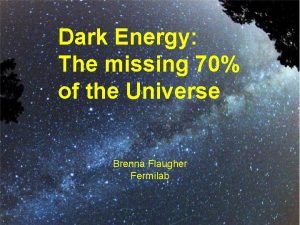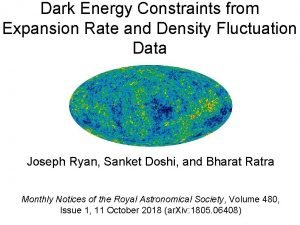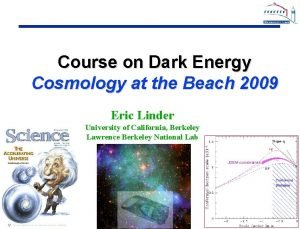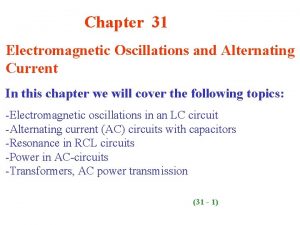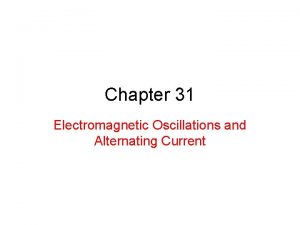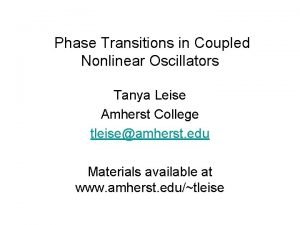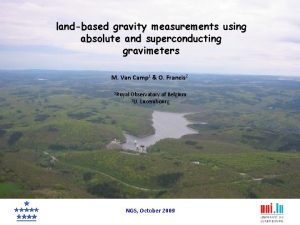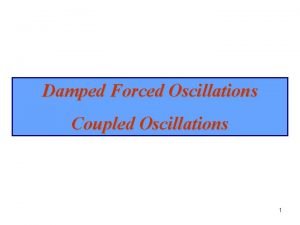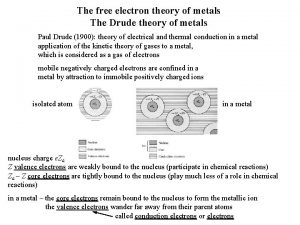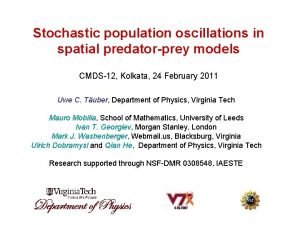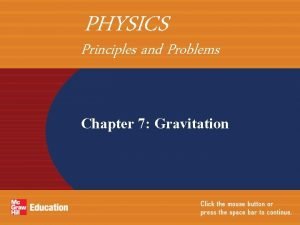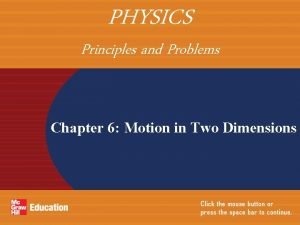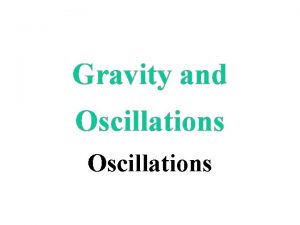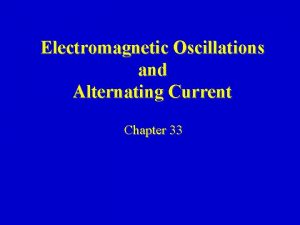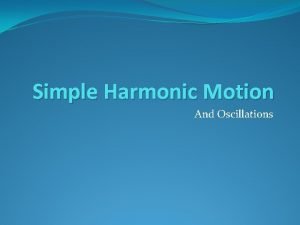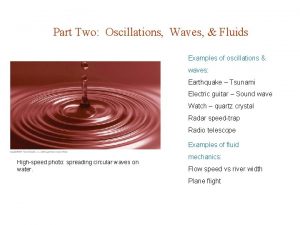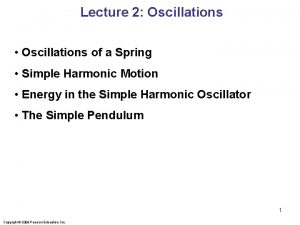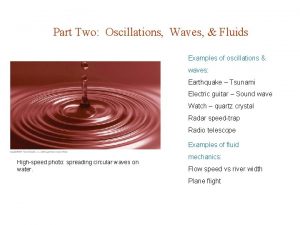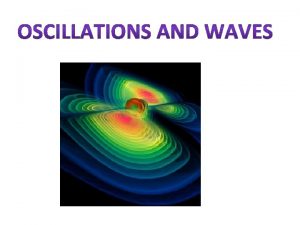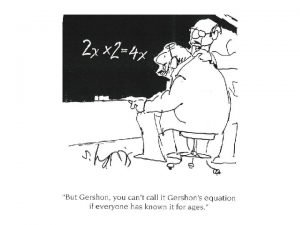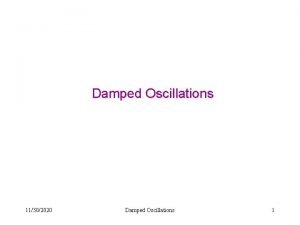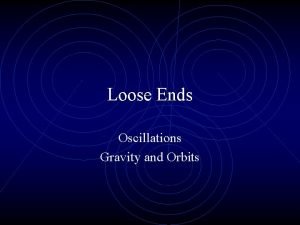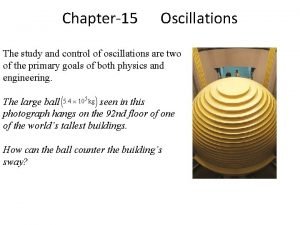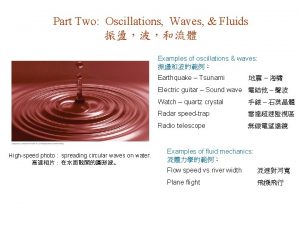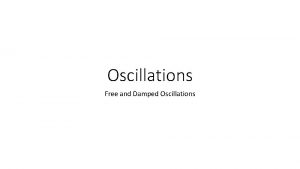Chapter 15 Oscillations 15 1 What is Physics



















- Slides: 19

Chapter 15 Oscillations 15. 1. What is Physics? 15. 2. Simple Harmonic Motion 15. 3. The Force Law for Simple Harmonic Motion 15. 4. Energy in Simple Harmonic Motion 15. 6. Pendulums 15. 7. Simple Harmonic Motion and Uniform Circular Motion 15. 9. Forced Oscillations and Resonance

What is Physics? • Any measurable quantity that repeats itself at regular time intervals is defined as undergoing periodic motion. • If the periodic variation of a physical quantity over time has the shape of a sine (or cosine) function, we call it a sinusoidal oscillation or simple harmonic motion. • Any periodic motion is superposition of simple harmonic motions.

Simple Harmonic Motion The maximum excursion from equilibrium is the amplitude A of the motion

The weight of an object on a vertical spring stretches the spring by an amount d 0. Simple harmonic motion of amplitude A occurs with respect to the equilibrium position of the object on the stretched spring.

Displacement

Some Observables for Simple Harmonic Motion The period T is the time required for one complete motional cycle. The frequency f of the motion is the number of cycles of the motion per second (unit is: 1 cycle/second=1 Hz). Frequency and period are related according to: • Angular frequency ω:

VELOCITY The velocity in simple harmonic motion is given by The maximum magnitude of velocity is

ACCELERATION The acceleration in simple harmonic motion is The maximum magnitude of the acceleration is

Force on an object in Simple Harmonic Motion Where K=mω2 is a constant Any object under a force of will be in simple harmonic motion. This force is called restoring force.

K=mω2 is spring constant

Check Your Understanding 2 The drawing shows plots of the displacement x versus the time t for three objects undergoing simple harmonic motion. Which object, I, II, or III, has the greatest maximum velocity?

Example 1 The diaphragm of a loudspeaker moves back and forth in simple harmonic motion to create sound, as in Figure. The frequency of the motion is f=1. 0 k. Hz and the amplitude is A=0. 20 mm. (a) What is the maximum speed of the diaphragm? (b) Where in the motion does this maximum speed occur? (c) What is the maximum acceleration of the diaphragm, and (d) where does this maximum acceleration occur?

Example 2 • An 0. 80 -kg object is attached to one end of a spring, as in Figure, and the system is set into simple harmonic motion. The displacement x of the object as a function of time is shown in the drawing. With the aid of these data, determine (a) the amplitude A of the motion, (b) the angular frequency w, (d) the speed of the object at t=1. 0 s, and (e) the magnitude of the object’s acceleration at t=1. 0 s.

Energy in Simple Harmonic Motion K=mω2 is spring constant, then m=k/ ω2

The Simple Pendulum we can write this restoring torque as If θ is small, then sinθ~θ, For simple pendulum, I=m. L 2

The Physical Pendulum

Sample Problem • In Fig. 15 -11 a, a meter stick swings about a pivot point at one end, at distance h from the stick’s center of mass. (a) What is the period of oscillation T? (b) What is the distance L 0 between the pivot point O of the stick and the center of oscillation of the stick?

Simple Harmonic Motion and Uniform Circular Motion Simple harmonic motion is the projection of uniform circular motion on a diameter of the circle in which the circular motion occurs.

Forced Oscillations and Resonance Two angular frequencies are associated with a system undergoing driven oscillations: (1) the natural angular frequency ω of the system, which is the angular frequency at which it would oscillate if it were suddenly disturbed and then left to oscillate freely, and (2) the angular frequency ωd of the external driving force causing the driven oscillations. How large the displacement amplitude xm is depends on a complicated function of ωd and ω. The velocity amplitude vm of the oscillations is easier to describe: it is greatest when a condition called resonance.
 Baryon acoustic oscillations
Baryon acoustic oscillations Elasticity and oscillations
Elasticity and oscillations Joint play grades
Joint play grades Baryon acoustic oscillations
Baryon acoustic oscillations Baryon acoustic oscillations
Baryon acoustic oscillations Baryon acoustic oscillations
Baryon acoustic oscillations Electromagnetic oscillations and alternating current
Electromagnetic oscillations and alternating current Electromagnetic oscillation pdf
Electromagnetic oscillation pdf Baryonic acoustic oscillations
Baryonic acoustic oscillations Coupled oscillations
Coupled oscillations Slow oscillations
Slow oscillations Velocity resonance
Velocity resonance Plasma oscillations
Plasma oscillations Plasma oscillations
Plasma oscillations Oscillations
Oscillations Modern physics vs classical physics
Modern physics vs classical physics University physics with modern physics fifteenth edition
University physics with modern physics fifteenth edition Ib physics hl ia ideas
Ib physics hl ia ideas Chapter 7 study guide physics
Chapter 7 study guide physics Chapter 6 study guide motion in two dimensions
Chapter 6 study guide motion in two dimensions
